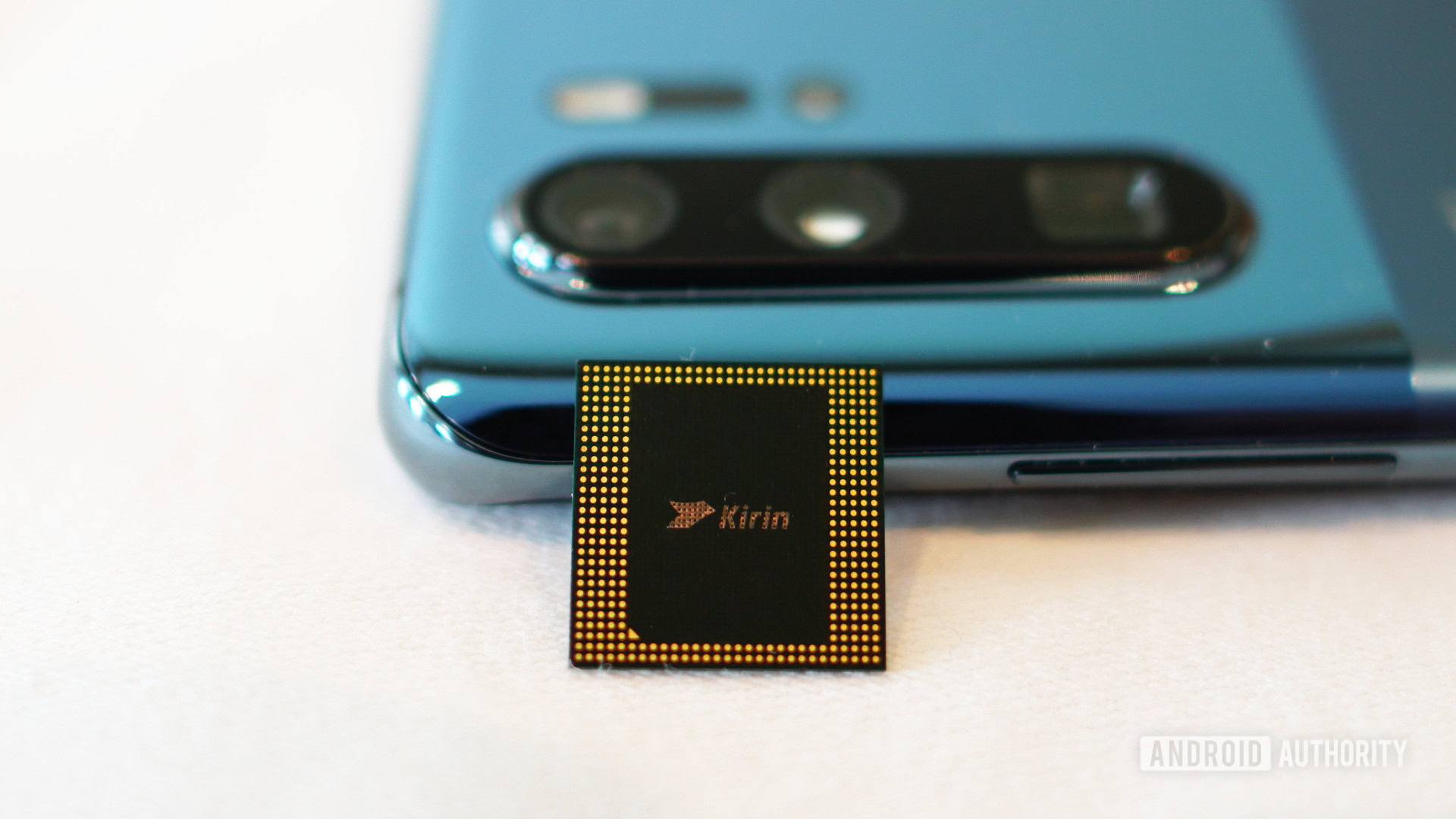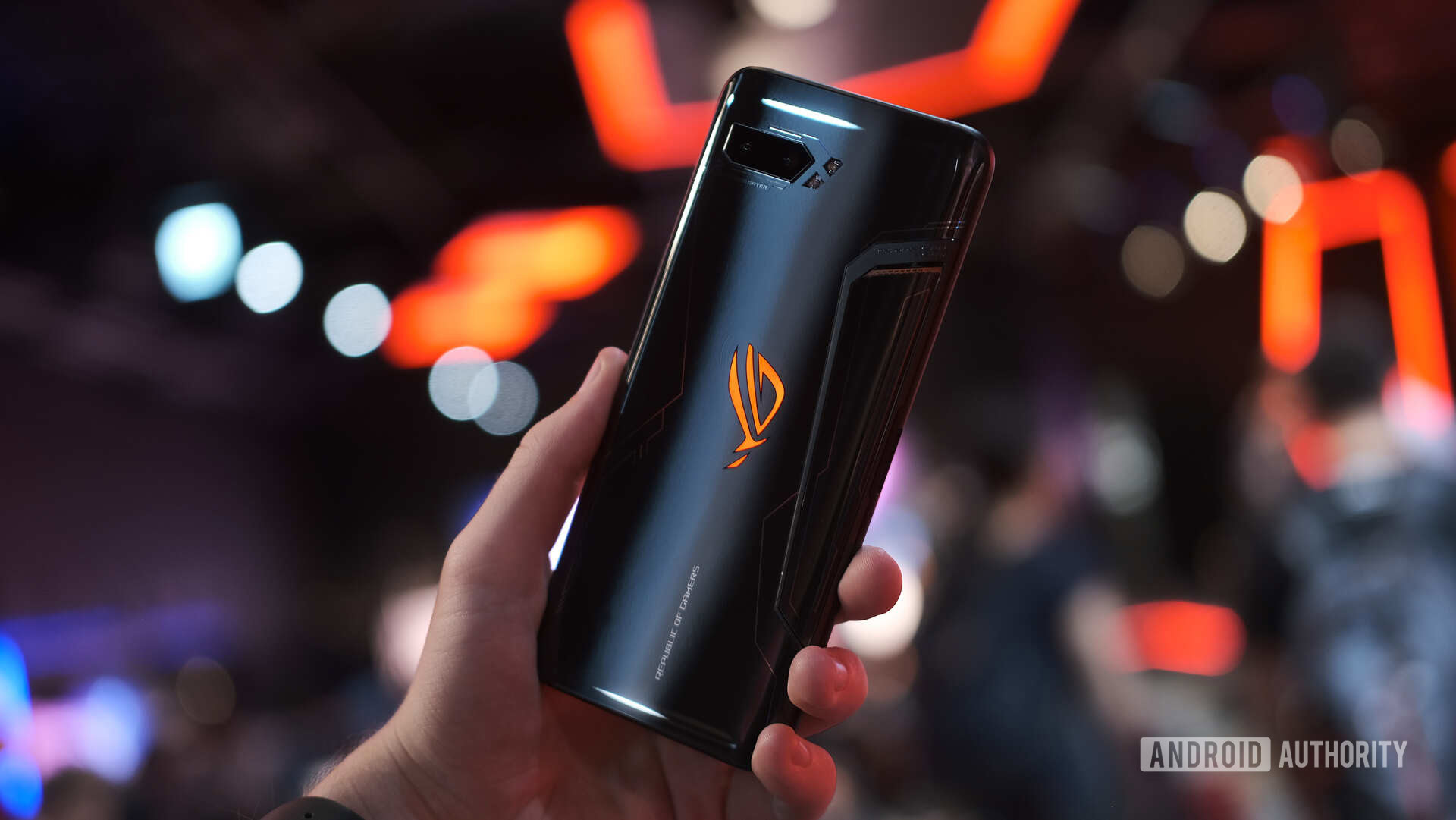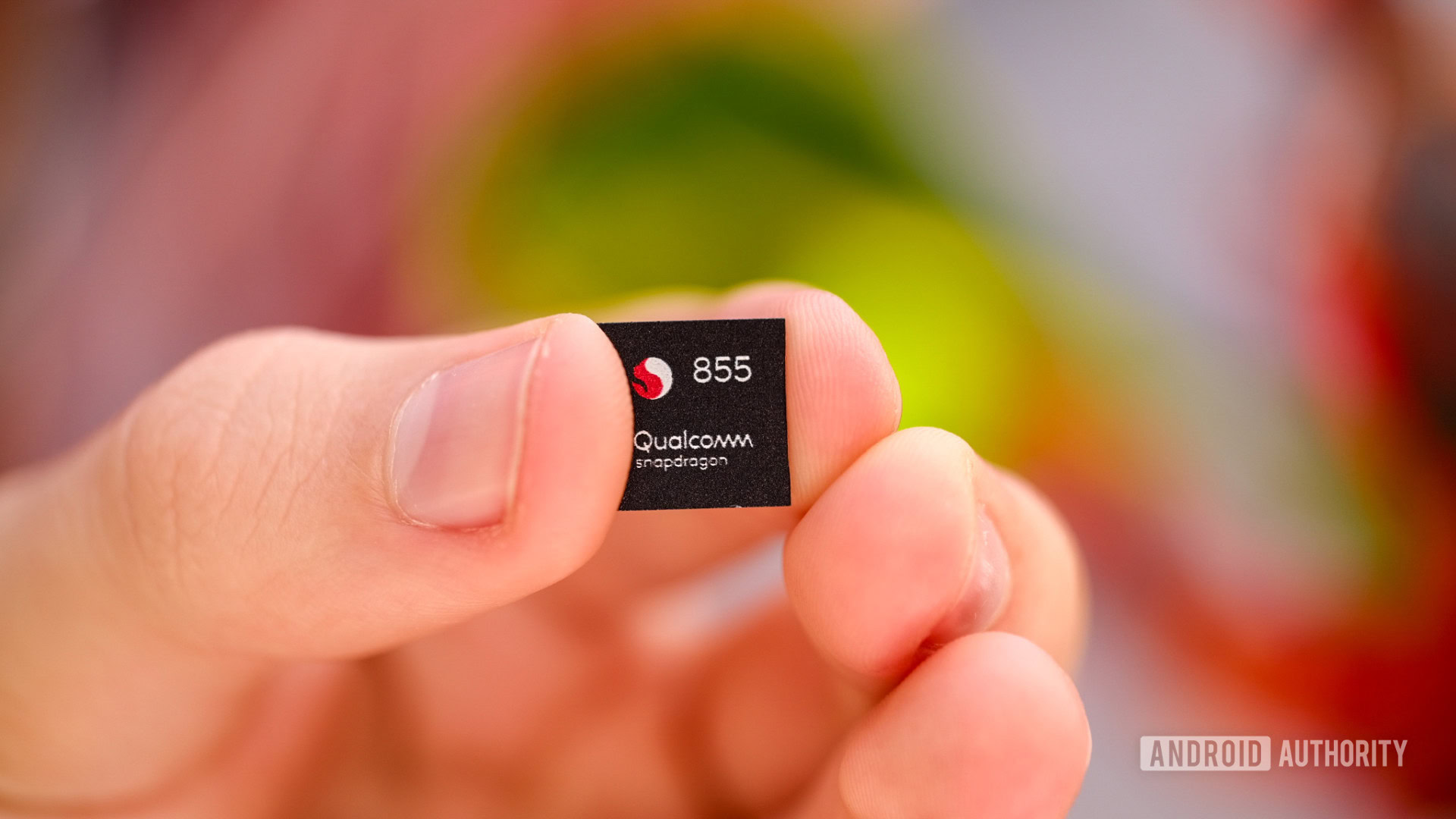Affiliate links on Android Authority may earn us a commission. Learn more.
Snapdragon 855 and 855 Plus vs Kirin 990: Which is the most powerful SoC?

The HUAWEI Mate 30 Pro is equipped lots of new cutting edge hardware, including HUAWEI’s latest Kirin 990 mobile application processor. During the phone’s launch, Huawei claimed best-in-class performance that could outpace Qualcomm’s Snapdragon 855 and Samsung’s Exynos 9825. With the Mate 30 Pro now in our hands, we can test out HUAWEI’s claims.
Not one to be outclassed, Qualcomm announced an updated version of its flagship chip earlier this year — the Snapdragon 855 Plus. The 855 Plus is mostly a gaming-focused upgrade, which is the key gap that HUAWEI has recently worked hard to close. The first smartphones sporting the Snapdragon 855 Plus are now on the market, which includes the OnePlus 7T.
Today, we are comparing how these latest chips stand up against the Snapdragon 855, which has powered most of this year’s flagship handsets. Here’s a detailed overview of the Qualcomm Snapdragon 855 and 855 Plus vs the Kirin 990.
Snapdragon 855 and Snapdragon 855 Plus vs Kirin 990: Specs
Before we dive into some benchmark numbers, let’s recap the key specifications of these high-end SoCs. The Kirin 990 stands out as the first flagship chipset boasting an integrated 5G modem, although HUAWEI makes a 4G-only model too that features some slightly lower CPU clocks.
All four of the chips here boast eight CPU cores. However, the configurations are slightly different. HUAWEI opts for a 2+2+4 big, middle, and small setup, which offers two big cores for more demanding applications. Meanwhile, the Snapdragon 855 and 855 Plus opt for a 1+3+4 design based on the hypothesis that demanding apps mostly only require one very high-performance CPU thread. One of the main differences between the Snapdragon 855 and 855 Plus is that this single big “Prime” core sees a clock speed boost to 2.96GHz, the highest clock on offer here.
| Kirin 990 (5G) | Kirin 990 (4G) | Snapdragon 855 Plus | Snapdragon 855 | |
|---|---|---|---|---|
CPU | Kirin 990 (5G) 2x Cortex-A76 @ 2.86GHz 2x Cortex-A76 @ 2.36GHz 4x Cortex-A55 @ 1.95GHz | Kirin 990 (4G) 2x Cortex-A76 @ 2.86GHz 2x Cortex-A76 @ 2.09GHz 4x Cortex-A55 @ 1.86GHz | Snapdragon 855 Plus 1x Kryo 485 Gold (A76) @ 2.96GHz 3x Kryo 485 Gold (A76) @ 2.42GHz 4x Kryo 485 Silver (A55) @ 1.80GHz | Snapdragon 855 1x Kryo 485 Gold (A76) @ 2.84GHz 3x Kryo 485 Gold (A76) @ 2.42GHz 4x Kryo 485 Silver (A55) @ 1.80GHz |
GPU | Kirin 990 (5G) Mali-G76 MP16 @ 600MHz | Kirin 990 (4G) Mali-G76 MP16 @ 600MHz | Snapdragon 855 Plus Adreno 640 @ 672MHz (estimated) | Snapdragon 855 Adreno 640 @ 585MHz |
RAM | Kirin 990 (5G) 4x 16-bit channels @ 2133 MHz LPDDR4X 34.1GB/s | Kirin 990 (4G) 4x 16-bit channels @ 2133 MHz LPDDR4X 34.1GB/s | Snapdragon 855 Plus 4x 16-bit channels @ 2133MHz LPDDR4x 34.1GB/s | Snapdragon 855 4x 16-bit channels @ 2133MHz LPDDR4x 34.1GB/s |
Storage | Kirin 990 (5G) UFS 3.0 | Kirin 990 (4G) UFS 3.0 | Snapdragon 855 Plus UFS 3.0 | Snapdragon 855 UFS 3.0 |
Modem | Kirin 990 (5G) 4G / 5G (integrated) 2300 Mb/s download 1250 Mb/s upload | Kirin 990 (4G) 4G LTE 1600 Mb/s download | Snapdragon 855 Plus Snapdragon X24 LTE 2000Mbps download 316Mbps upload | Snapdragon 855 Snapdragon X24 LTE 2000Mbps download 316Mbps upload |
Process | Kirin 990 (5G) 7nm FinFET+ EUV | Kirin 990 (4G) 7nm FinFET | Snapdragon 855 Plus 7nm FinFET | Snapdragon 855 7nm FinFET |
The clock speed differences and tweaked CPU cores in the 855s make it difficult to judge performance based on the specs alone. Qualcomm opts for higher clocks in the larger cores. The Kirin 990 is a tad more conservative in its big cores but pushes its four small Cortex-A55 cores a little harder. Despite the different approaches, the overall CPU packages are quite difficult to pick apart in a meaningful way.
Graphics prowess is similarly difficult to pick apart on paper. We know little about Qualcomm’s in-house Adreno GPU, making direct comparisons to Arm’s Mali difficult. HUAWEI has increased the number of GPU cores this generation, which closes the gap with the Snapdragon 855. However, the 855 Plus promises a 15% jump in GPU performance that should keep its nose out in front.
Elsewhere, we see the same level of support for LPDDR4X RAM and fast UFS 3.0 memory across both chips and their variants. All the chips are built on TSMC’s 7nm FinFET process. However, the Kirin 990 5G model is built on TSMC’s cutting edge 7nm+ EUV technology. This improved process is likely what allows HUAWEI to boost the 5G version’s CPU clocks.
Snapdragon 855 and Snapdragon 855 Plus vs Kirin 990: Benchmarks
For these comparisons, we used the HUAWEI Mate 30 Pro boasting the 4G variant of the Kirin 990. The smaller CPU core clock speeds are a little lower than the 5G Kirin 990 model, but this won’t result in a major difference performance. Still, it’s something to keep in mind when looking at multi-core CPU performance figures. These will certainly improve in the Kirin 990 5G.
Similarly, the Asus ROG Phone 2 is the only phone on this list that boasts a display with a refresh rate above 60Hz. As a result, the phone is able to achieve a much higher frame rate in some benchmarks, but we don’t yet know how the Kirin 990 would perform with a similar refresh rate limit above 60Hz.
With that in mind, here are the results.

Starting with the CPU cores, there’s a rather interesting revelation. It’s the Kirin 990 that comes out on top in the single-core CPU result, despite the Snapdragon 855 Plus boasting the highest clock speed. Most likely, this is down to improved cache and/or memory in the Kirin 990, such as the Smart Cache feature that keeps the high-performance core well fed. There’s also a question over how long the Snapdragon 855 Plus can sustain its peak clocks, but that’s something that warrants further investigation.
The multi-core CPU scores are much closer, as expected. There’s some variation across Snapdragon 855 and 855 Plus handsets, though the Kirin 990 4G clocks in at the head of the group. We have to imagine that the Kirin 990 5G model, with its higher clock speeds, would nudge out in front.
The Kirin 990 carves out a small lead in single-core CPU performance.
The graphics results show a different picture. HUAWEI’s claims that the Kirin 990 has caught up to the Snapdragon 855 appears to be true, although the chip doesn’t push ahead as HUAWEI boasts. The 6% touted performance lead was likely plucked from a specific game. However, if HUAWEI can offer Snapdragon 855 gaming performance with 20% better energy efficiency, that’s a bit win for HUAWEI gamers.
The Kirin 990 vs Snapdragon 855 Plus is a different matter. The 855 Plus variant shows around a 13% lead in 3DMark, including over the regular 855. Qualcomm positioned the 855 Plus as a gaming-focused upgrade and this is definitely where you’ll see the biggest difference. As we mentioned earlier, the 855 Plus in the ASUS ROG Phone 2 is also a great pairing to push the 120Hz display to its limits.
The Kirin 990 catches up with the Snapdragon 855's graphics performance, but the 855 Plus is well out in front.
In real games, all these of these chips offer similar levels of high performance. With most phones locked to 60Hz, the Snapdragon 855 and Kirin 990 look almost inseparable. However, with 90Hz and 120Hz display increasingly common, the Snapdragon 855 Plus provides the extra grunt needed to hit those higher frame rates.
Beyond the benchmarks

Of course, there’s more to mobile application processors than just performance. We’ve already touched on the Kirin 990’s 5G modem, 7nm+ EUV process, and GPU energy efficiency gains that make it a great chip outside of its CPU and GPU capabilities.
HUAWEI and Qualcomm pride themselves on offering industry-leading support for heterogeneous compute, neural networking, and AI platforms. The Snapdragon 855’s Hexagon 685 DSP marked Qualcomm’s first inclusion of dedicated vector performance improvements and a Tensor Accelerator. These are designed to accelerate common machine learning workloads.

Similarly, the Kirin 990 boasts HUAWEI’s in house DaVinci NPU to perform these task types. The Kirin 990 4G includes a big and small version of this processor for high performance and always-on tasks. The 5G variant doubles the big NPU core count for substantially more performance. Unfortunately, we can’t benchmark these processors just yet, but both companies are dedicating increasing amounts of silicon to machine learning capabilities.
The two companies are on the cutting edge of image signal processing technology too. The two offer increasingly powerful imaging features embedded in hardware for high performance and low power consumption.
The Snapdragon 855 saw the introduction of Qualcomm’s CV-ISP (computer vision ISP). This design frees up Hexagon DSP cycles when running common image processing tasks, saving up to 4x the power. Likewise, HUAWEI’s Kirin 990 boasts dedicated ISP silicon that now handles DSLR-grade BM3D noise reduction in hardware, competitive 4K 60fps video encoding, and overkill 7680fps slow-motion video. Preference will boil down to which features you’re going to use regularly.
Snapdragon 855 and Snapdragon 855 Plus vs Kirin 990: The verdict
HUAWEI and Qualcomm continue to go toe-to-toe in the flagship mobile SoC race, and the company’s latest chips are no exception. HUAWEI has closed the gaming gap on its rival, which has been Kirin’s Achilles heel in generations gone by. Although the Snapdragon 855 Plus is the more gaming powerful option, but its extra power is put to the most use in phones with a 90Hz or 120Hz display.
The Kirin 990 claims a marginal victory over the 855 and 855 Plus in the CPU department. It also offers 5G integration that’s more efficient than it rivals’ external 5G modem setup.
That being said, HUAWEI was first to announce its next-gen chips. Its real competition will come from upcoming Snapdragon and Exynos announcement destined for 2020 flagship smartphones. HUAWEI may offer a lead in some areas at the for the time being, but Qualcomm will certainly contest for first place in these categories again later this year.